My epic third day in Bhutan continued that afternoon in the Wangdue District, about a 30-minute drive south of the city of Punakha. I’d be exploring a 17th-century village first, and then head to a second village to experience local life and have some amazing food! Come along with me as I try some medieval Bhutanese dishes, including Bhutanese puris, in Wangdue, Bhutan!
Tsheten (my guide from MyBhutan) and I started in the village of Rinchengang, which is thought to be one of the oldest villages in Bhutan! Here, the houses are all clustered together. The village’s forefather was among the people brought over from India in 1638 when the Bhutan’s founder and unifier, Zhabdrung Ngawang Namgyal, was building the nearby Wangdue Phodrang Dzong fortress. In the village, you can see traditional stonemasonry and multigenerational households. And it is also the home of some most popular dishes.
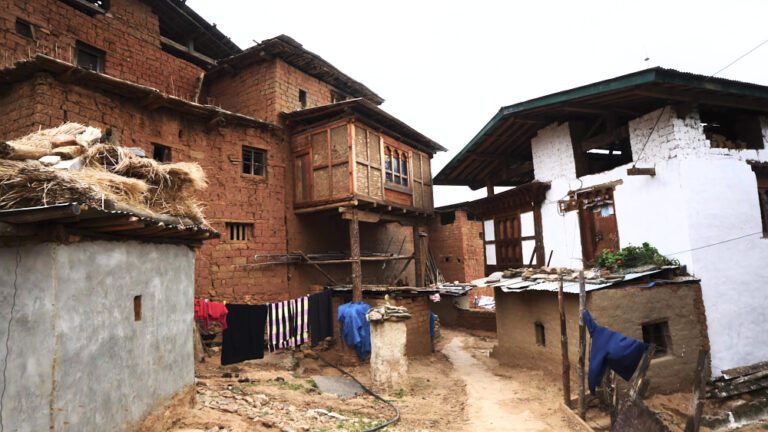
Our driver, Nidup, dropped us off at the top of the Bhutanese village, which is located on a hillside above the Puna Tsang Chu River in Wangdue Province, Bhutan. We’d be making our way down. To my right was the entrance to a house with firewood stacked outside. The house was multi-level and 4 generations live inside. There were cows and stray dogs wandering around everywhere. It was like taking a trip back in time!
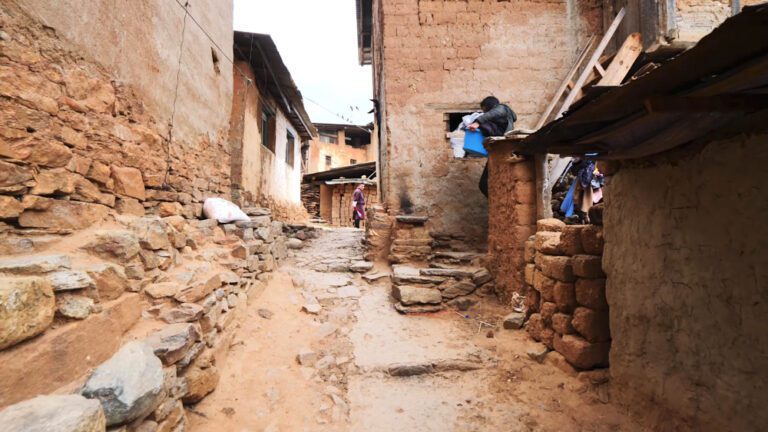
I could see the fortress across the river and the air quality was amazing. The architecture was so different and authentic. Then, I got to see some of the mud-bricks that they use to build the houses. A lot of the older houses have stone foundations and mud-bricks on the top. The newer houses also have wood in them.
There’s only one main path that connects the 20-or-so houses in Rinchengang. They love stockpiling the mud-bricks. I could hear music playing in the background and kids playing cricket. The village reminded me of an Ottoman village I once visited in Turkey. Visiting is a great window into local life. There are no gift shops as it’s not a tourist area. It’s a real, authentic local experience.
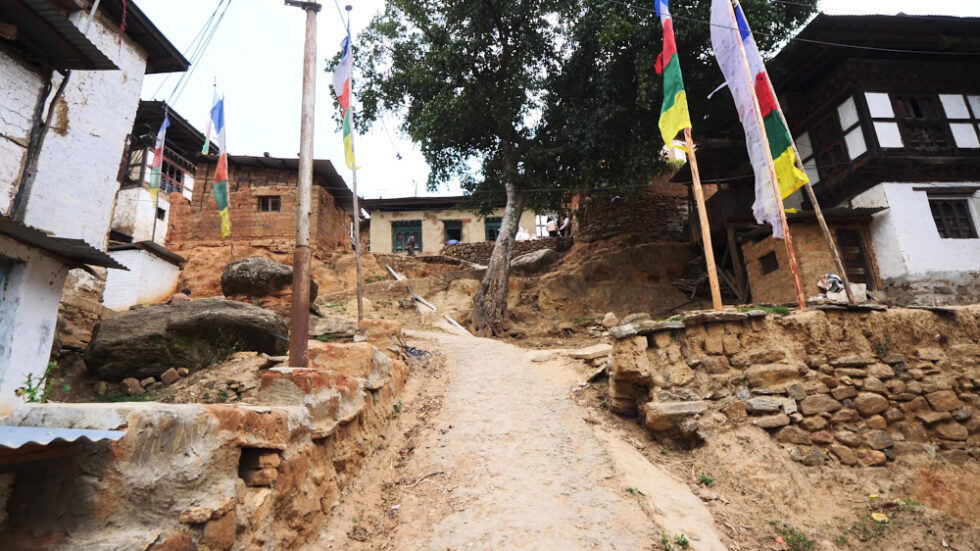
It started to rain a bit, but not too bad. We reached the bottom of the Bhutanese village and got back in the car to cross the river to Rubesia. Along the way, we saw Wangdue Phodrang Dzong fortress, which burned down in 2012. It was being renovated, so I couldn’t visit it.

Past the fortress, the road winds along the Puna Tsang Chu River, and you can get an amazing look at Rinchengang. It’s the prettiest Bhutanese village I had seen so far because of how closely the houses are clustered and the ride paddy fields around it. We followed the super narrow, winding road across a bridge and around the mountains. It road is kind of scary!
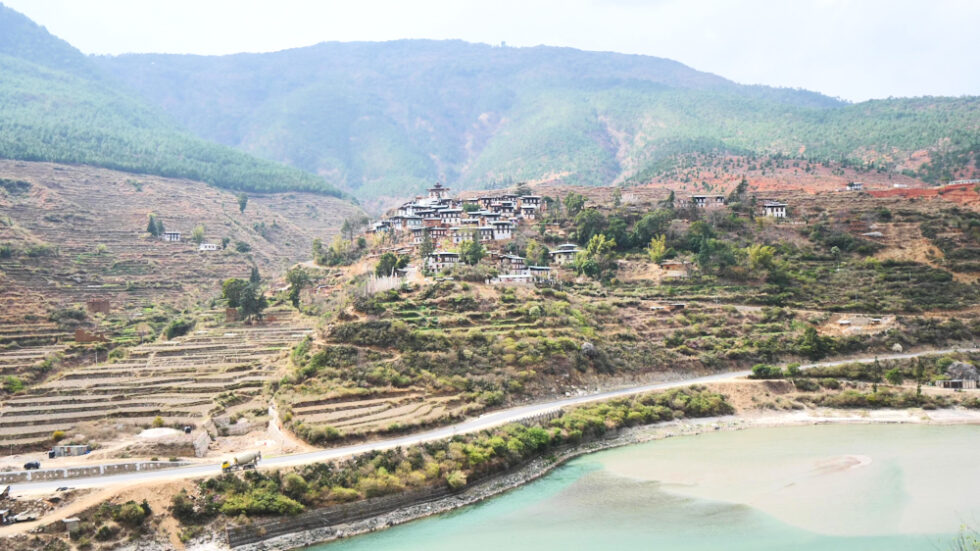
As we continued toward the Bhutanese village of Rubesia, the road got very rocky and bumpy. It was like getting a Bhutanese massage! In Rubesia, the houses are much farther apart from one another than the previous one in Wangdue, Bhutan. Tsheten and I headed to the second floor of a local house and took our shoes off. There, we met some of the locals. There was lots of space and small, low couches.
We had some milk tea with sugar, flattened corn, flattened rice, and roasted rice powder to prepare some traditional Bhutanese food. The tea was basically like chai. The flattened corn was the best. In the western region, if you visit any household, they will offer you milk tea or butter tea. In the eastern part of Bhutan, they will offer you ara made from corn.
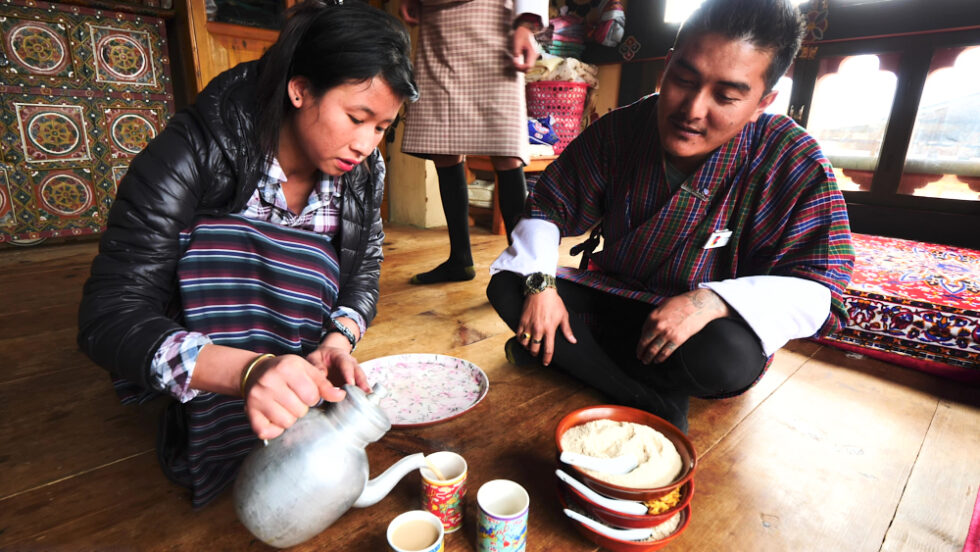
I took a mini nap on the mat and then went out to the village to go see some locals making puris. But first, they were playing archery. I tried it out but I wasn’t good at it. Tsheten hit the target! From there, we headed down a dirt path and through a wooden gate to a house where they were making Bhutanese puris called maku, which are made from rice like Indian puris. They take a small amount of dough, press it into a small disc shape, and deep-fry it so it puffs up into a hollow, crispy ball.
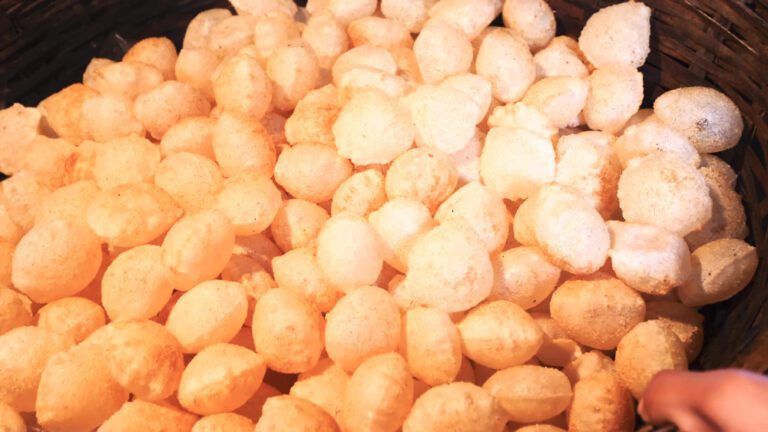
I tried one that tasted similar to popcorn! I wanted to try some with some ema datshi! It is Bhutan’s national dish. We bought a bag of them for 200 Nu/$2.65 USD. It was so good and crispy, airy, and not too oily. It was one of the delicious national dish I have ever tried. I ate three of these Bhutanese dishes right away! Further on, we passed some tomatoes growing and Tsheten had to run from a bull protecting its calf!
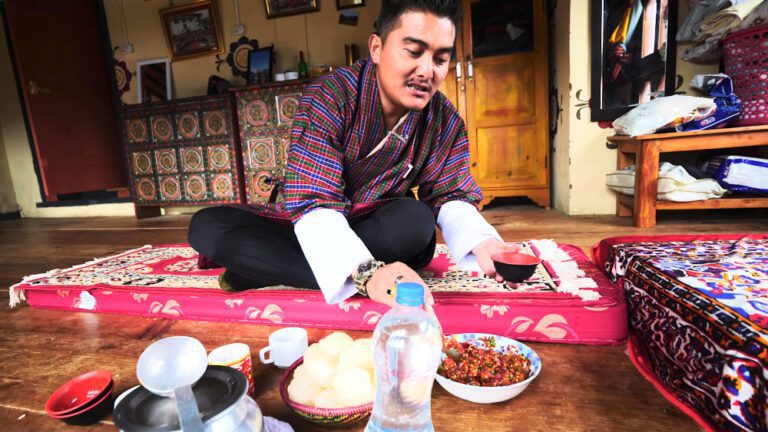
We entered another Bhutanese village building by climbing a super steep staircase to the second level, where we had some maku with red chili salsa with onion and tomato called ezay. Tsheten and I enjoyed it with some strong ara!
I broke the maku in half and scooped up some of the ezay. It was extremely spicy, but so amazing! The nuttiness of the maku combined with the fresh but fiery ezay was an unreal combination.

I ate about five of them, and then it was time to make some ema datshi, which is a spicy dish that consists of chilies and yak cheese. I cut off the top of the chilies and halved them before the cook took over.

The paintings in the house were done by graduates from a painting school in Thimphu. In the olden days, all of the paintings came from the Bhutanese village. They were bright and colorful. There’s so much color and detail in all of it. There was also an altar room for religious purposes.
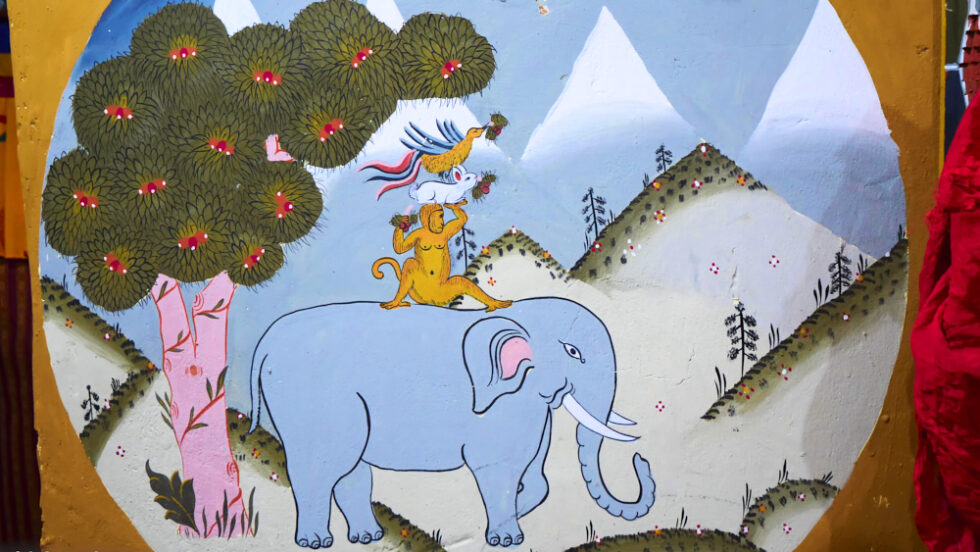
Fresh cow cheese and processed cheese went into this ema datshi. We enjoyed it with red rice, kewa datshi (chili, chili powder, cheese, and potatoes), ema datshi, spinach soup, fried beef with chilies, and ezay (chili salsa). We ate everything traditional-style, on the floor with no tables.

I started with the spinach soup with red rice, which was creamy and full of spinach. It was a nice, small portion and so yummy!
The ema datshi was nice and spicy, while the kewa datshi was super creamy. The beef looked amazing and was so spicy, juicy, and full of flavor with spicy stew! The chili salsa was so refreshing. The numbing Szechwan peppers (locally called sichuan pepper) were outstanding. Every Bhutanese meals got better and better! The tender dried beef cooked with the peppers and dried chilies and cheese was unreal! My Bhutanese village visit in Wangdue, Bhutan was one of my favorite experiences in the country so far!

I hope you liked coming with me to have medieval Bhutanese food in Wangdue Province, Bhutan! If you did, please give this video a thumbs up and leave a comment below. Also, please subscribe to my YouTube channel and click the notification bell so you don’t miss any of my travel/food adventures around the world!
Counter
101 Countries • 1432 Cities